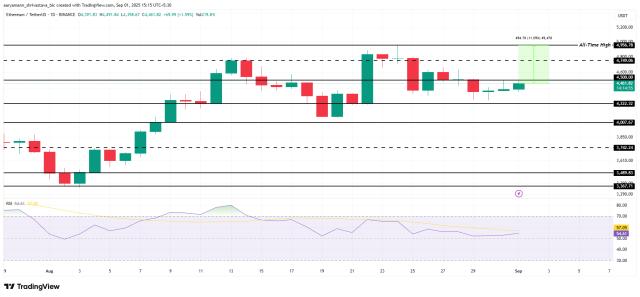The Federal Reserve (Fed) monetary policy meeting will be held this month, and the current market focus is on whether the Fed's independence will be damaged and whether the upcoming interest rate cut will be "politicized."
Peter Tchir, head of macro strategy at Academy Securities, recently wrote that these concerns have fueled a widespread expectation: even if the Federal Reserve begins to cut interest rates, it will only push down short-term rates, while long-term yields will face upward pressure due to inflation concerns. This view has now become mainstream in the market and guides many investors' positioning.
However, Tchir believes that investors may not be thinking outside the box enough, and therefore underestimating the government's plans to lower interest rates. Beyond traditional monetary policy, the US government could employ a range of unconventional measures, including adjustments to the Federal Reserve's balance sheet, changes to inflation statistics, and even a revaluation of gold reserves, to achieve its goal of lowering long-term interest rates.
Tchir added that these potential policy options go beyond simply cutting interest rates and could involve coordination between the Federal Reserve, the Treasury Department and even accounting standards.
"Politicized" interest rate cut or data-driven interest rate cut?
The market's concerns about the "politicization" of interest rate cuts may have overlooked the economic rationale of the rate cuts themselves.
The article states that if there are sufficient reasons at the data level to support a substantial interest rate cut, then market panic over long-term interest rates may not occur.
Tchir noted that economic data had already shown signs of weakness before officials disagreed on the rate cut. For example, at the July Fed meeting, two officials dissented from the decision not to cut rates, and the June jobs data subsequently saw a significant downward revision. Jerome Powell's speech at Jackson Hole also struck a dovish tone.
These signs suggest that the case for a rate cut within the Fed may be stronger than the minutes reveal.
Tchir believes that if subsequent employment data fails to show strong improvement, a 50 basis point rate cut in September is well within the "reasonable" range and cannot be simply seen as politically driven. If the rate cut is viewed as justified by the market, the "alarm bell" expected by investors - a sell-off in long-term bonds - is unlikely to materialize.
Traditional interest rate tools are becoming less effective
Tchir believes another reason for the U.S. government to consider unconventional options is that the effectiveness of traditional monetary policy tools is waning.
The article explains that influencing the economy solely through adjustments to the front-end federal funds rate has a "long and variable" transmission path, making its effects difficult to assess. In the months after a policy takes effect, any number of factors, such as trade wars and geopolitical conflicts, could alter the economic trajectory.
Furthermore, since the zero interest rate policy era, many corporate, individual, and municipal bond issuers have locked in long-term low interest rates, making them much less sensitive to changes in front-end interest rates. This means that the transmission of monetary policy through short-term interest rates is no longer as effective as it once was.
What might be in the “toolbox” of unconventional policies?
If traditional tools are not effective, the government may open its unconventional policy "toolbox" and directly intervene in long-term interest rates.
Aggressive rate cuts coupled with forward guidance
One possible strategy is to “cut it all in one fell swoop,” for example, by cutting interest rates by 100 basis points in one go, while promising to keep them on hold for several quarters unless the data show a significant change.
The move is intended to quickly dispel persistent market speculation about the path of future rate cuts. A one-time 100 basis point rate cut would require a significant steepening of the yield curve to keep the 10-year Treasury yield above 4%, a potentially difficult task for the bond vigilantes.
"Attacking" inflation from a data perspective
Another strategy is to directly challenge the validity of inflation data. Currently, the heavily weighted housing cost component of the US CPI is artificially inflating inflation figures due to its lagged "owner's equivalent rent" (OER) calculation.
Tchir noted that a new indicator compiled by the Cleveland Fed shows that true rental inflation has returned to normal levels, significantly below the housing inflation reported in the CPI. By highlighting these data discrepancies, the US government can effectively allay market inflation fears and pave the way for rate cuts.
Restart the "Twist Operation"
The most important measure may be to restart Operation Twist (OT), which is to lower long-term interest rates by selling short-term US Treasury bonds and buying long-term US Treasury bonds at the same time.
The Fed's balance sheet is currently heavily skewed toward short-term debt, holding approximately $2 trillion in bonds with maturities under seven years, compared to just $1 trillion in bonds with maturities of 15 years or longer. Analysts envision the Fed selling approximately $1.2 trillion in bonds maturing three years or less and using the proceeds to purchase longer-term bonds maturing 20 years or longer.
Tchir pointed out that this move will nearly triple the Fed's holdings in the ultra-long bond market, and its purchasing power will be enough to influence or even control the ultra-long bond market, which accounts for about 50% of the free float, thereby directly lowering long-term yields.
Other potential options
Other, more disruptive options may also be considered.
For example, yield curve control (YCC), although there is no precedent in the United States, has been practiced in Japan. For a government accustomed to "setting prices" through tariffs, setting a cap on yields is not unthinkable.
Another option is to revalue US gold reserves. It is estimated that revaluing US official gold reserves to market value could generate approximately $500 billion in accounting gains. While complex, this move would effectively distract the market and potentially provide funding for other investment projects.
Tchir added that the move could lead to a weaker dollar, but that might be "a feature, not a bug" for an administration aiming to improve its trade deficit.








